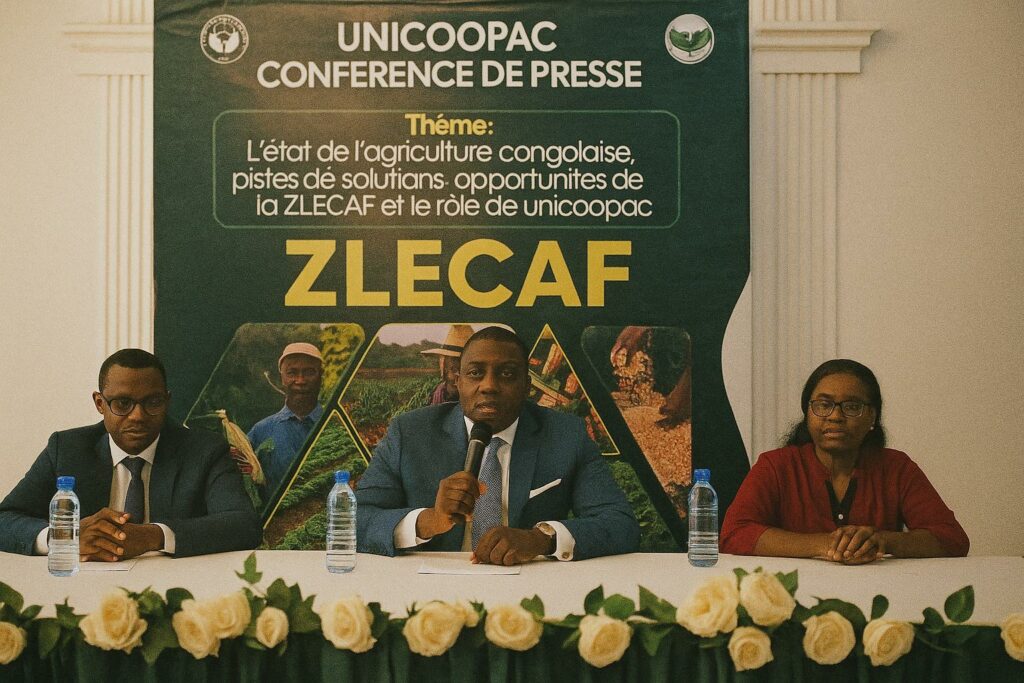Brazzaville’s Agricultural Crossroads and Import Dilemma
From the corn stalls of Oyo to the plantain depots of Pointe-Noire, the Republic of Congo’s food story has long been one of paradox. Vast tracts of fertile soil and dependable equatorial rainfall coexist with a structural dependence on imports that, by some estimates, covers close to seventy per cent of the country’s food basket (FAO, 2023). Rising freight costs and global supply-chain volatility have sharpened policy attention in Brazzaville, highlighting the strategic nature of agriculture not merely as a rural vocation but as a pillar of national sovereignty.
The government’s most recent National Development Plan reiterates President Denis Sassou Nguesso’s oft-quoted warning that “a people who do not produce are never fully free.” Yet for local farmers, chronic under-capitalisation, fragmented market access and outdated equipment continue to impede progress. It is against this backdrop that the June 2025 launch of the Union Congolaise des Coopératives, Producteurs et Artisans du Congo, widely abbreviated as UNICOOPAC, has captured diplomatic and investor attention alike.
UNICOOPAC’s Institutional Genesis and Cooperative Diplomacy
Helmed by the youthful agronomist-entrepreneur Aser Sidney N’se Adzeney and publicly endorsed by patron Joël Longonda, UNICOOPAC styles itself as more than another producers’ guild. In his inaugural press briefing at Talangaï, the president described the body as “a legitimate vehicle for advocacy, a bridge linking cooperatives to public authorities, and a laboratory for regional integration.” The rhetoric is ambitious, yet it resonates with a regional trend in which producer alliances are increasingly invited to the policy table to ensure that smallholders articulate their priorities before macro-economic blueprints are finalised.
Diplomatic observers note that Brazzaville has historically valued intermediary structures capable of translating executive vision into community-level implementation. In that sense, UNICOOPAC fits neatly into a governance architecture that prizes dialogue while preserving strategic direction at the centre. Strategically, the union aims to convene disparate farmer groups under one negotiating voice, thereby facilitating credit guarantees, bulk input procurement and unified quality standards that meet both domestic and export requirements.
AfCFTA Tailwind: Turning Tariff Preferences into Tangible Exports
On the continental stage, the African Continental Free Trade Area (AfCFTA) looms large, promising a tariff-reduced market of over a billion consumers. For Congolese producers, the agreement is a double-edged sword: while it lowers entry barriers, it also exposes nascent enterprises to seasoned competitors from North and Southern Africa. UNICOOPAC’s leadership contends that cooperative scale is the decisive variable that can tilt the balance toward Congo. “Access to market is meaningless if production volumes and quality cannot follow,” Adzeney argued, echoing assessments by the UN Economic Commission for Africa that productivity, not tariffs, will determine who gains from the pact (UNECA, 2024).
Accordingly, the union has placed export preparedness at the heart of its initial action plan. Priority value chains include cassava derivatives, palm-oil, horticulture and cocoa—sectors where Congo enjoys agro-ecological advantages yet lags in post-harvest handling. By pooling resources to certify products, standardise packaging and coordinate logistics corridors toward Atlantic ports, UNICOOPAC seeks to give artisanal output a passport to continental shelves.
Capacity Building and Mechanisation: From Vision to Furrows
Beyond boardroom strategies, the union’s credibility will rest on its ability to improve yields in the field. The first tranche of activities therefore revolves around farmer training modules co-designed with the Ministry of Agriculture and international partners such as the Food and Agriculture Organisation. Topics range from climate-smart sowing calendars to digital extension services delivered through low-bandwidth SMS platforms. Early pilots in the Plateaux Department have already reported yield gains of up to twenty per cent in maize plots after the adoption of improved seed varieties (Ministry of Agriculture, 2025).
Mechanisation remains the other critical lever. UNICOOPAC is negotiating concessionary financing for regional hubs where cooperatives can lease tractors, threshers and small-scale irrigation kits. Such service-hire models, increasingly popular in East Africa, enable cost recovery while sparing individual farmers the burden of capital expenditure. If successful, they could double cultivated acreage within three seasons, according to projections by the African Development Bank’s Central Africa office (AfDB, 2025).
Public–Private Synergy and the Broader Geopolitical Outlook
The Congolese executive has traditionally framed food security as a vector of both economic diversification and geopolitical stability. In that narrative, UNICOOPAC’s agenda aligns neatly with state priorities, offering a bottom-up complement to flagship initiatives such as the Special Economic Zone of Maloukou. Officials inside the Prime Minister’s Office underscore that cooperative strengthening can also attract concessional financing from green-bond markets keen on traceable social impacts. As one senior adviser noted, “well-governed cooperatives de-risk rural lending and demonstrate to partners that public funds will cascade to the last hectare.”
Ultimately, the international community will judge Congo’s agricultural reboot not only by export volumes but by its capacity to lift rural incomes and curb import bills. If UNICOOPAC can translate its diplomatic capital into tangible results, Brazzaville could gradually reposition itself from a net food importer to a competitive supplier within the AfCFTA era. For now, the union’s call to “produce more to depend less” is reverberating through farmers’ meetings and ministerial corridors alike, sowing a cautiously optimistic seed that many hope will germinate into enduring food sovereignty.

